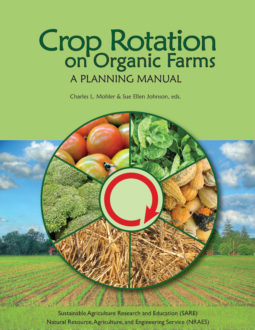Intercropping reduced densities of insect and mite pests in about 50 percent of the cases that have been studied, usually by disrupting the ability of the pest to find its host (2). Choosing an intercrop that does not host key pests on the main crop is critical. Intercropping usually does not reduce, and may even increase, the density of generalist pests. Whether insects are actually repelled by the odor of non-host plants is a matter of controversy. The odor of non-hosts does confuse insects that search for hosts by smell (110), making mixtures of dissimilar crops less attractive than monocultures. A mixture of leaf shapes can similarly confuse insects that search for their hosts by sight. For some pests, simply alternating rows or strips of different crops can be sufficient to interfere with insect movement or host-finding ability.
Specialist pests have different ways of finding their host plants, and non-host plants disrupt some species more easily than others. Crucifer flea beetles (Phyllotreta cruciferae), for example, are attracted to an area by odors of plants in the cabbage family. Since they move somewhat randomly within that area, landing on anything green, intercropping tends to reduce flea beetle numbers on the host plants (although often not enough to control damage). Imported cabbageworm butterflies (Pieris rapae), on the other hand, are good at finding their host plants in a mixture of other plants, and many studies have found that intercropping has no effect on their numbers. In the spring, newly emerged Colorado potato beetles find their hosts primarily by walking, and densely planted grass or heavy mulch interferes with their ability to do that. Expert farmer Eero Ruuttila leaves strips of rye–hairy vetch cover crop between widely spaced rows of potatoes, which interfere with the beetles’ movement. He later mows the cover strips and uses the clippings as mulch, which interferes with beetle movement and provides habitat for beetle predators.
